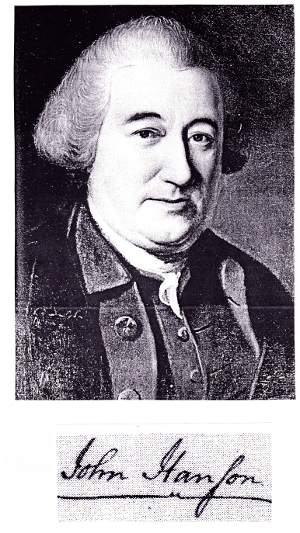Schools in the United States teach children from an early age that the first president of the United States was George Washington. But teachers often forget to mention a small, kind of important detail – George Washington was the first US president under the current United States Constitution, but he wasn’t the country’s first president.

Before the U.S. Constitution came into being, the Articles of Confederation served as the glue which held all 13 states together as a single country. The articles went into effect in 1781, and the established a loose alliance among the states. The articles also defined the role of Congress to oversee the national needs, as well as the office of the president. Due to the fear of giving too much power to one person, the office of the president was extremely limited in power and scope, and was not even a paid position. Rather, the primary roles of the president at this time were simply to preside over meetings and handle various state correspondence. The president was also the one who signed official congressional documents.
So who were these individuals who served such a lackluster position as the office of president?
The first president of the United States under the articles of Confederation was John Hanson from Maryland. His term began in 1781 and ended in 1782. He had first attempted to resign directly after being elected. However, ultimately a quorum could not be reached to name a successor, so he decided to stay on as president. Hanson held the position of president when the government started on the road to creating what would become the US Post Office and National Bank. The government also established a single, uniform currency throughout the states under his mostly powerless watch.
Elias Boudinot of New Jersey became the second president, serving from 1782 until 1783. His presidency coincided with the official end to the American Revolutionary War. Boudinot presided over the country when the Treaty of Paris was signed in Paris on September 3, 1783. However, the Treaty of Paris did more than simply end the war; it required that the United States be recognized as an independent country and no longer part of the British Empire. Boudinot was also known in his era for advocating for the rights of both Native Americans and black people, as well as directly sponsoring various youth among these groups so that they could receive an education.
Thomas Mifflin became the president for the term of 1783 until 1784. He oversaw the ratification of the Treaty of Paris during his presidency. Originally from Pennsylvania, he served under Gen. George Washington during the Revolutionary war. That former position, and Washington’s later significance as the first president under the U.S. Constitution, made it somewhat ironic that President Mifflin accepted George Washington’s resignation as commander-in-chief.
Richard Lee of Virginia served as the country’s fourth president from 1784 until 1785. His presidency might have been pretty uneventful, but his political career afterwords was not. He became a vocal opponent of the now current U.S. Constitution out of the fear that it would create a centralized government too similar to the government that the colonies lived under as British citizens. He also hesitated because the document lacked a bill of rights, though many of his later suggestions were incorporated into the United States Bill of Rights.
Other presidents that had followed were John Hancock, Nathaniel Gorham, Arthur St. Clair and Cyrus Griffin. Please share this information and educate Americans! There is more about history than we are being taught.
